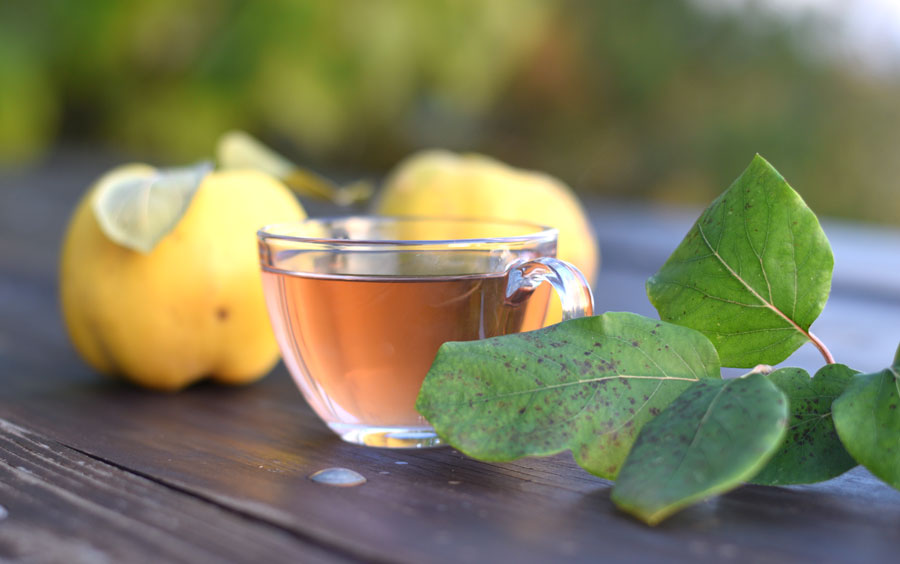Quince, an ancient fruit with a rich history in traditional medicine, is making a modern comeback—especially in the form of quince tea. Made from the fruit, seeds, or even leaves of the quince plant (Cydonia oblonga), this aromatic and subtly sweet tea offers a range of health benefits.
Whether you’re sipping it to soothe a sore throat or support your digestive system, quince tea is a gentle and nourishing drink with a lot to offer.
What Is Quince?
Quince is a yellow, pear-shaped fruit that grows in temperate regions of Europe and Asia. While it’s too tart to eat raw for most people, it’s often cooked into jams, jellies, and teas. When used to make tea, both the fruit slices and quince seeds can be steeped, each offering slightly different benefits.
Nutritional and Medicinal Properties of Quince Tea
1. Rich in Antioxidants
Quince contains compounds such as phenolics, flavonoids, and vitamin C, which help neutralize free radicals and reduce oxidative stress in the body. This can support the immune system and slow down cellular aging.
2. Anti-Inflammatory Effects
The tea may help reduce inflammation, making it potentially beneficial for conditions like sore throat, mild joint pain, or even seasonal allergies.
3. High in Tannins and Mucilage
Quince seeds, when soaked in hot water, release mucilage, a gel-like substance that coats and soothes mucous membranes. This makes quince seed tea especially helpful for:
- Coughs and bronchitis
- Sore throat
- Stomach discomfort
4. Digestive Support
Quince tea may help relieve indigestion, nausea, and constipation. Its mild astringent properties (thanks to tannins) help tone the digestive tract and reduce inflammation.
5. Heart Health and Cholesterol
Some studies suggest that quince fruit may help regulate cholesterol levels and blood pressure, thanks to its fiber and antioxidant content. While tea won’t provide fiber, it still delivers beneficial compounds in a more easily absorbed form.
6. Mildly Diuretic
Quince tea can act as a gentle diuretic, helping to flush out toxins and reduce water retention without stressing the kidneys.
How to Make Quince Tea
From Fresh Quince Fruit:
- Wash and thinly slice half a quince.
- Boil in 2–3 cups of water for about 15–20 minutes.
- Strain and serve with honey or lemon (optional).
From Quince Seeds:
- Add 1–2 teaspoons of dried quince seeds to a cup of boiling water.
- Let steep for 10–15 minutes.
- Strain and drink warm.
⚠️ Do not crush or chew the seeds, as they contain small amounts of amygdalin, which can release cyanide when broken down. When used whole for tea, they are considered safe in moderate amounts.
Tips and Uses
- Drink quince tea warm to relieve cold symptoms or sore throats.
- Combine it with cinnamon or ginger for added warmth and flavor.
- Use it as a calming evening tea—it’s naturally caffeine-free.
Who Can Benefit from Quince Tea?
Quince tea is generally safe for most people and may be especially beneficial for:
- People with mild respiratory issues or seasonal colds
- Those with sensitive digestion
- Individuals looking for a natural, caffeine-free health tonic
As always, if you’re pregnant, nursing, or taking medications, consult your healthcare provider before adding any herbal tea to your routine.

Fragrant, flavorful, and filled with natural goodness, quince tea is a traditional remedy with modern appeal.
Whether you’re looking to soothe your throat, calm your stomach, or simply enjoy a comforting beverage, quince tea is a delightful and healthful choice.

